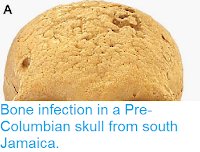The geoglyphs in the Nazca Pampa, an area spanning approximately 20 by 15 kilometres were designated as a UNESCO World Heritage Site in 1994. At that time, only about 30 geoglyphs had been identified in the Nasca Pampa. These geoglyphs depicted people and many different animals, including Birds, Monkeys, Fish, Snakes, Foxes, Felines, and Camelids. By 2015, research efforts successfully identified over 40 biomorphic geoglyphs. All of these figures were created by removing the black stones that cover the land, thereby exposing the white sand beneath. They are categorised into two main types, depending on whether the geoglyphs were made by removing stones to form lines, type (A), or to form solid-coloured surfaces, type (B). Type (A) geoglyphs are generally large in scale, and all of the figures that span more than 50 meters across belong to this type, while most type (B) geoglyphs are less than 50 meters. Type (A) geoglyphs date relatively later and were likely created in the Early Nazca period roughly 100 to 300 AD. On the other hand, the type (B) geoglyphs are thought to have been produced at least during the Initial Nazca period roughly 100 BC to 100 AD, if not earlier.
A press release distributed on 15 November 2019 by Yamagata University details the results of a study by a team led by Masato Sakai of the Faculty of Humanities and Social Science, in cooperation with IBM Japan, in which they analyzed satellite images since 2004, using the IBM Watson Machine Learning Community Edition software developed at the IBM Thomas J. Watson Research Center in the US, and carried out fieldwork to clarify the distribution of the Nasca Lines and to study the potteries found at the geoglyphs since 2010.
Nazca Bird geogliph, (left) original image, (right) processed image. Yamagata University.
The researchers at Yamagata University analysed high-resolution images of the entire Nasca Pampa, obtained through aerial laser measurements among other methods, and conducted fieldwork in the area. Through these efforts, they constructed a hypothesis that one type of biomorphic geoglyph type (B) was chiefly produced along some small paths situated in the western region of the Nasca Pampa. As a result of on-site studies carried on until 2018, they identified 142 figures of people, animals, and other objects.
Nazca Humanoid geogliph, (left) original image, (right) processed image. Yamagata University.
Out of the newly identified geoglyphs, the longest stretched over 100 meters across and was categorised under type (A), while the smallest was under 5 meters and belonged to type (B). Fieldwork identified type (A) figures to be ritual places shaped like animals, where people held ceremonies involving the destruction of pottery vessels. Meanwhile, type (B) figures were produced beside paths or on sloping inclines and are thought to have been used as wayposts when travelling. In short, type (A) geoglyphs were created as locations for practising rituals, and type (B) geoglyphs were designed to be looked at.
Nazca Two-headed Snake and Humanoids geogliph, (left) original image, (right) processed image. Yamagata University.
The researchers are still conducting fieldwork at several sites, including as-yet unexamined areas. However, there is still much work needed in surveying the distribution
of these geoglyphs. In addition, the expansion of urban areas in Nasca
has brought damage to the lines, resulting in a trend that has drawn
attention as a social issue. There is an urgent need to gain an accurate
understanding of the geoglyphs' distribution so that work can be done
to protect them.
Nazca Fish geogliph, (left) original image, (right) processed image. Yamagata University.
See also...










